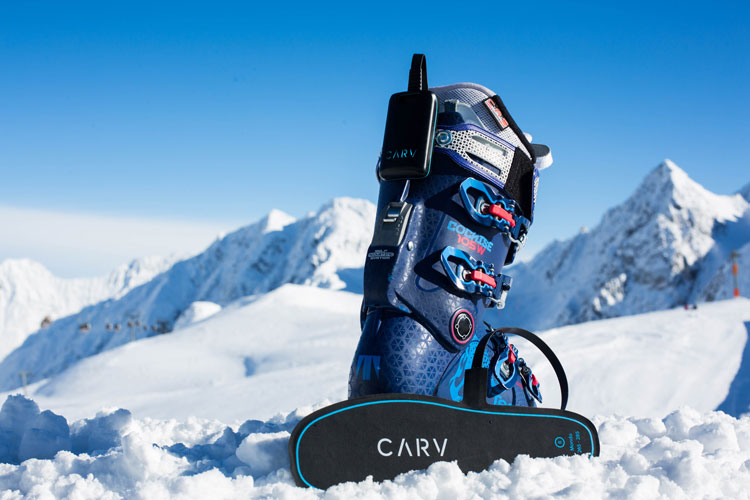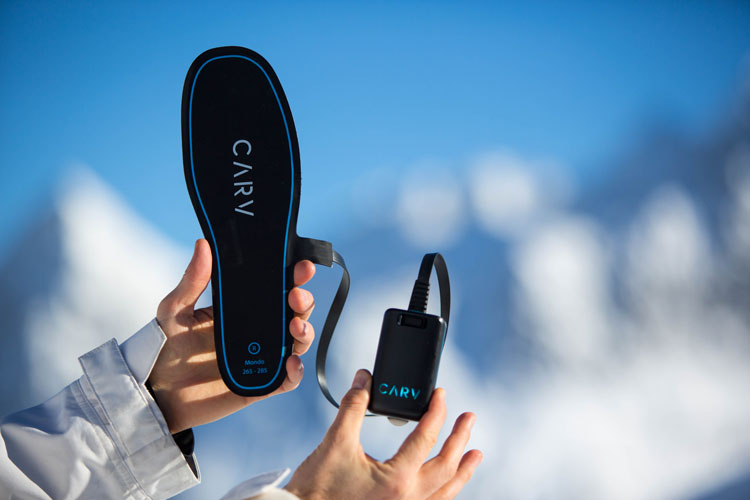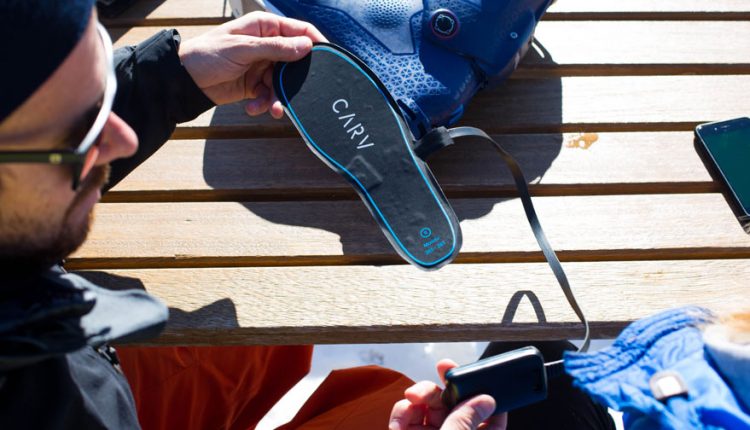Like many startups, Carv was born out of an education project, namely – a PhD thesis. CEO and founder Jamie Grant completed a Master of Physics at University of Oxford before undertaking a PhD in Financial Economics at Imperial College London. He then applied both these disciplines to his passion of skiing.
Frustrated with the learning process for skiing, Grant first experimented with a smartphone app to analyze his performance, but found that the smartphone’s sensors had limitations. He went on to speak with professionals, such as those in the Olympic ski team and discovered the valuable metrics worth analyzing required pressure and motion sensors. Four years later, in December 2017, Carv was launched.
“Even our investors are die-hard skiers.”
eeDesignIt spoke with Ross Murray-Jones, CCO at MotionMetrics to learn more about the winter wearable.
A skier himself, Murray-Jones grew up in Geneva and started skiing at the age of five. He later met Grant on a mountain in Canada whilst skiing.
Murray-Jones started by telling us about the team: “Everyone in the team is a skier – everyone is passionate. Even our investors are die-hard skiers.”
Resources
When asked which resources were used to get the startup off the ground, refreshingly a book was cited as a source of help – The Lean Startup by Eric Ries, which Murray-Jones said had great information on how to build an MVP (Minimum Viable Product). Aside from this book, they also utilized podcasts, online resources – and of course, people.
“If it is the right route for you to build a product, go through an incubator, with an environment of people who have done it before,” Murray-Jones said.
MotionMetrics used the Hax hardware accelerator program in China – similar to Kokoon startup.
“It was a great decision for us, it still continues to help us. When you are launching a company you are not supposed to know everything – that’s why you are a startup. It is key to find people to help you on your journey.”

The biggest surprise on your startup journey so far?
“The willingness of great people to help. The company moved to Austria recently, where everyone skis – and everyone is very receptive to our idea. People come out of the woodwork with contacts and networking to help us.”
Crowdfunding journey
The crowdfunding campaign on Kickstarter had 1,234 backers who pledged $275,196 of Carv’s $50,000 goal. Murray-Jones told eeDesignIt that the entire product changed off the back of Kickstarter comments and feedback.
“I joined post-Kickstarter,” Murray-Jones said, “But I know that it was a wonderful process. For people interested in starting their own campaign, I would say the most important factor of the campaign design is getting your materials right and a great video. A great video will do you a lot of favors in the short, medium and long term.”
Kickstarter was great for Carv in terms of product development, but it was also great in terms of company development, as off of the back of the campaign, MotionMetrics hired employees, struck partnership deals and raised investment.
“Do your research,” said Murray-Jones, “Different strokes for different folks – but Kickstarter worked really well for us.”
The Brexit impact:
“In the short term, it could have ramifications due to the volatility of the exchange rate. Medium to long term, we have a broad team from all over the world and bases in London and Europe – any other ramifications would be more from a personnel point of view.”
The User Experience (UX):
- Started with an iOS app launched to Oxford and Cambridge varsity networks. The Carv team spent three weeks skiing with this community, sharing metrics from the app and gaining feedback.
- The team worked with top Olympic ski teams from the US, Italy and Slovenia, as well as Red Bull athletes and ski instructors in Canada and New Zealand.
- Utilized Kickstarter feedback.
- The team ski with their Kickstarter early adopters, backers and investors.
- Kickstarter backers were employed as team members.

Design priorities:
- Get the hardware right first, for a long time there was only a product team before the commercial team came on board.
- To build a great, advanced piece of hardware that is robust, can withstand harsh weather environments and is accurate – that allows everything else to fall into place, as a great product is easier to sell.
“The bulk of what happens when you ski, happens inside your ski boot,” said Murray-Jones.
The Carv app provides real time feedback and drills – and a Ski IQ based on 35 metrics, allowing competitive skiers to settle scores with friends.
“The past five years of wearables has been measure and display – but we believe the next five years is taking that data and presenting it real time,” commented Murray-Jones
Elite level skiers can benefit from Carv as well with Carv Pro which provides 35 metrics for every turn, which allows ski academies to match up video analysis with the raw data from every turn. This would be too much for the average consumer, but is the kind of data that can help win gold medals. Carv Pro will be launching as a premium feature with a monthly subscription.
The future for Carv
Murray-Jones explained that with Carv, they have built one of the most advanced pressure and motion sensors in the market, and that this could easily translate into applications for other sports – snowboarding for example, but that right now MotionMetrics are a small team focused on getting it right for skiing – their passion.
In the future, MotionMetrics will look to partner Carv with fitness tracker products should there be demand. For now, the startup is focused on refining Carv with software upgrades: “We have over-engineered the hardware to be in a really strong position to do a lot with the software and go in multiple directions,” said Murray-Jones.
MotionMetrics are currently working on a second version of the hardware that will be built into a ski boot, which will allow them to break into the rental market more easily. This also creates a more streamlined product so that users forget the technology and use the ski boots as a learning tool.
Top tips for tech startups:
- Get it out there – talk to as many people as you can about it.
- Get validation for your idea as quickly and cheaply as you can – and then build on that validation
- Don’t be afraid to ask for help.
Sum up your experience as a startup so far:
“It is great to build a company in an industry you are incredibly passionate about,” summed up Murray-Jones.

